Public relations has always been about capturing attention, owning or participating in a public conversation, and shaping the narrative of your brand, industry, or company.
Digital PR is the execution of public relations campaigns and tactics in today's digital landscape.
From P.T. Barnum to Ryan Holiday, public relations professionals have used the tools and media at their disposal to get attention and drive interest in their brands.
In fact, in the landscape of marketing initiatives, I used to understand content marketing to be a function of public relations and communications. Rather than paying for ad placements or buying inventory, you simply create the narrative using owned or earned media.
The lines in the sand are to some extent washing away.
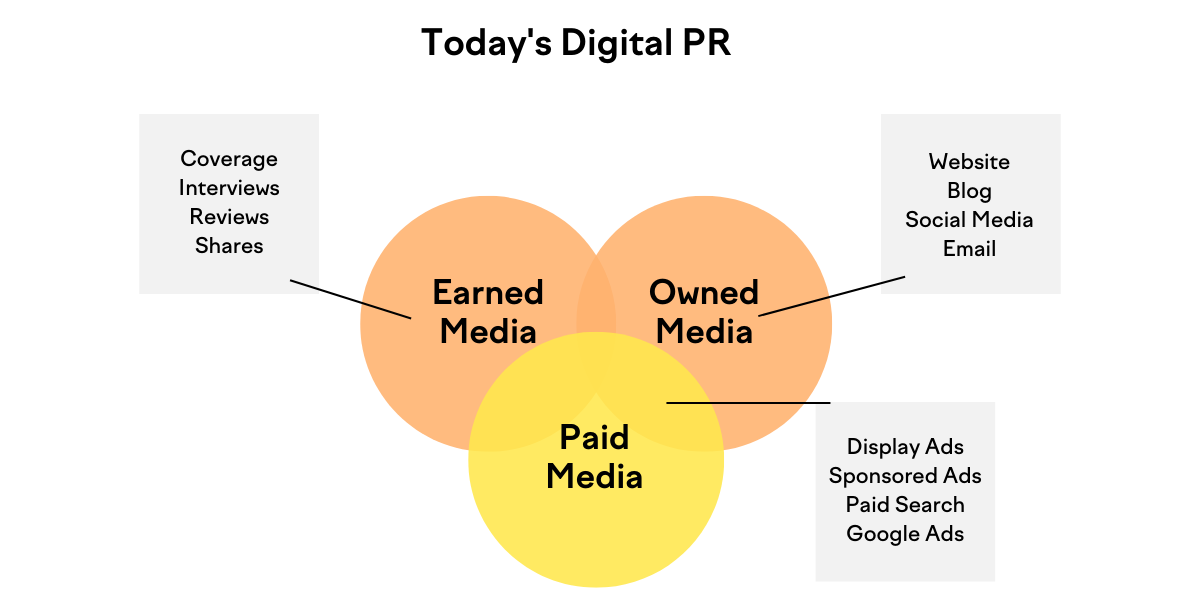
For example, organic and paid search optimization are sometimes grouped together in titles like demand generation or SEM.
Similarly, content marketing and PR often sit together in “communications” or “brand” or sometimes also “demand generation.”
How we define and delineate marketing channels isn’t so clean anymore (just ask someone what “growth marketer” means).
But the goals of public relations have remained the same: capture favorable attention and increase brand visibility through earned media.
The objectives remain largely the same in the digital context.
However, where digital PR diverges from traditional PR is in the tactics and methods used and the way we set goals for and measure their performance.
Digital PR vs Traditional PR vs Link Building
A PR professional working at Edelman (an award-winning digital PR firm) in 1994 might have looked at the following metrics to track a campaign:
Brand Impact Media Coverage Media Reach Share Of Voice Sentiment Analysis Crisis CommunicationsThese don’t differ widely from typical brand marketing metrics.
In Digital PR, however, your metrics might include the following:
Website Traffic Referral traffic Returning Visitors New Unique Visitors Backlinks Backlink velocity SERP visibility / share of searchWhen it comes to digital PR, backlinks seem to be the key metric.
I once joked on a podcast with Jeremy Moser that “digital PR” was simply the fancy euphemism for people who didn’t think “link building” sounded cool:
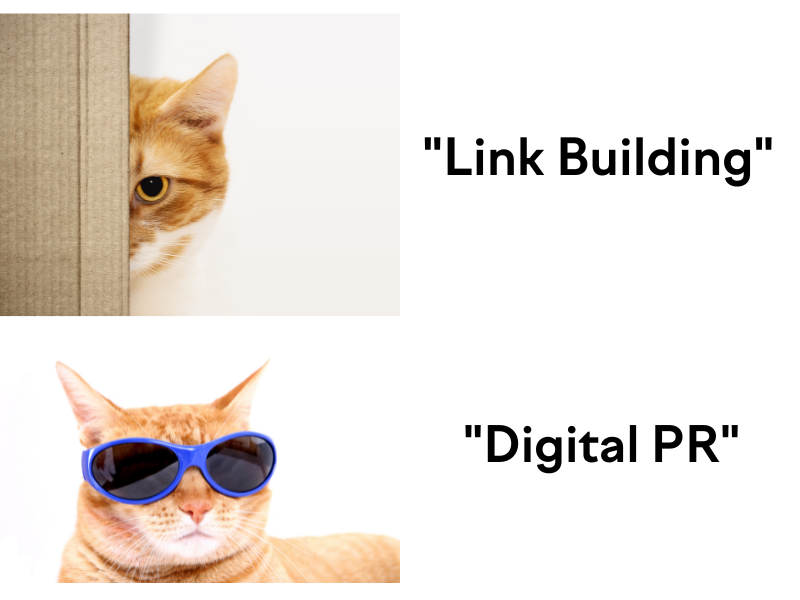
Equating Digital PR with link building is oversimplification. Just like “growth” is related to traditional marketing, but it’s not just a fancy repackaging, digital PR is both something that already existed and something that should be treated with its own tools and mindset.
In relation to SEO and link building, digital PR tends to look at links as one input into the overall effectiveness of their campaigns, and the quality of the link and publication matters a lot.
The benefit of a link in digital PR is both its value for earned media (i.e. is the publication widely read and prestigious?) and its value for owned media (i.e. does this placement help us boost up our owned content in SEO and content?).
Not that link quality didn’t matter to SEOs in the past, but they would rarely track referrals or define specific target accounts for link placements.
Digital PR, to me, marries the tactical methodologies of link building and off-page SEO with the mindset of a public relations professional.
And yes, it sounds fancier to say “digital PR” than any of the other phrases for this work…
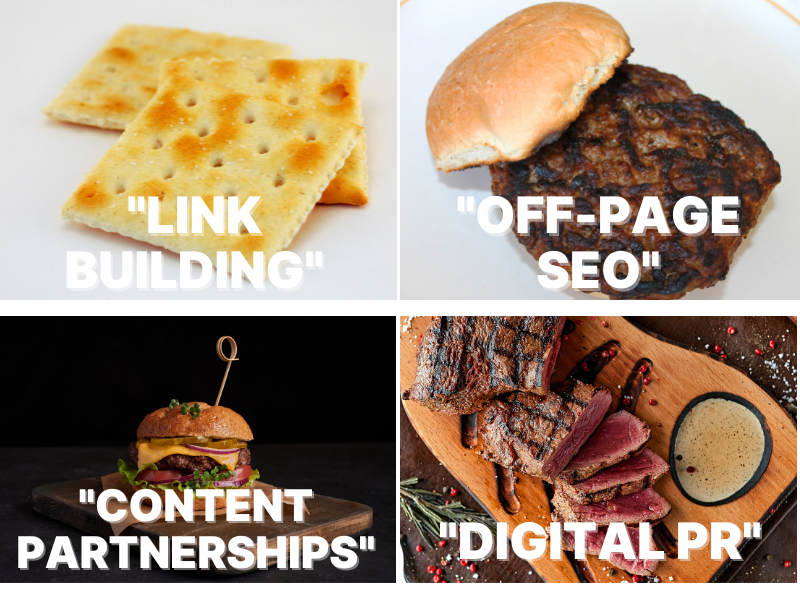
I promise, that’s my last meme!
Digital PR is but one facet of PR as a whole, but it’s almost always executed with an SEO playbook and toolkit.
Therefore, it’s not fair to say that digital PR is just plain old link building, nor is it the exact same thing as traditional PR before it.
Digital PR is a mix of SEO and PR, and the goals and KPIs of will reflect that differences.
3 KPIs for Digital Public Relations
Digital public relations campaigns tend to be similar to traditional PR, but are aimed more at digital assets like blogs and website traffic.
To get more concrete, though, what are the indicators of success in digital PR?
In my mind, you have three goal scopes:
Backlinks Referral traffic SERP visibility1. Backlinks
While backlinks have always been tracked by SEOs, the criteria for placement is different with digital PR.
For instance, you may have a list of publications that you’re sure your target customers read, and only seek to get placements in those publications. Or you may have a threshold for website authority or page authority score. Perhaps you even have a threshold for the estimated traffic to a given page, and you only count links above that traffic threshold.
Whatever your criteria, backlinks in digital PR rely heavily on the quality of said link. Not just any backlink will do (and not all backlinks are of equal value). With traditional backlinking, it’s usually all about the quantity of backlinks.
You can track backlinks easily using a tool like Semrush.
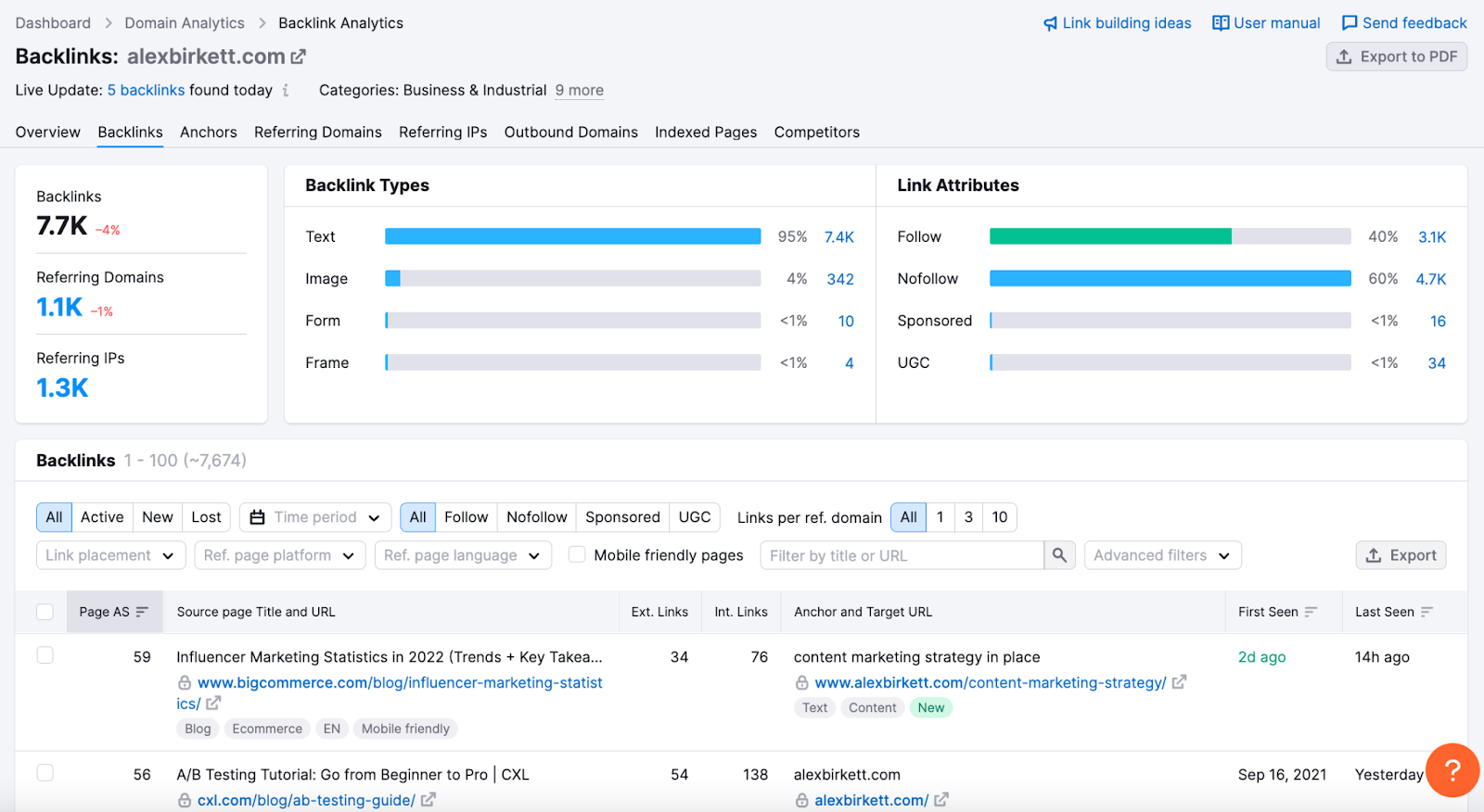
2. Referral Traffic
Increasing referral traffic is another way to gauge the success of a digital PR program.
By using this metric, you’re inherently including both links as a target as well as valuing links coming from higher traffic pages and websites. If you get a link on a page no one visits, you’ll get no referral traffic from it.
You can track referral traffic in Google Analytics.
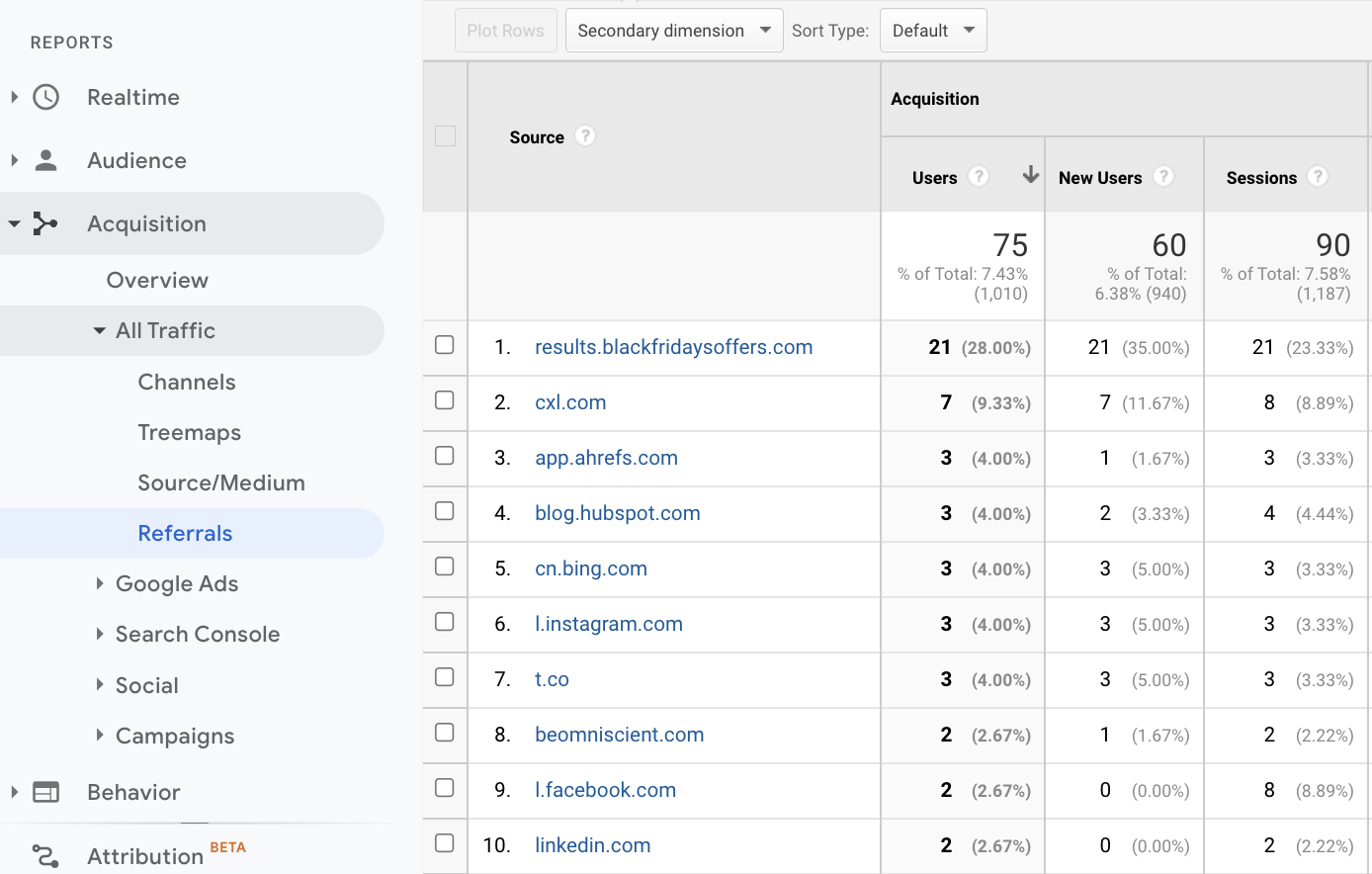
3. SERP Visibility
Finally, SERP visibility is a new metric based on the Surround Sound SEO strategy. It looks at the search results page for a keyword holistically, estimating the potential visibility and traffic you could attain from your domain being included on every page that ranks for the keyword.
For example, if your company sells email marketing software, the keyword “best email marketing software” is a high-intent search term that returns dozens of review sites and listicles on the SERPs.
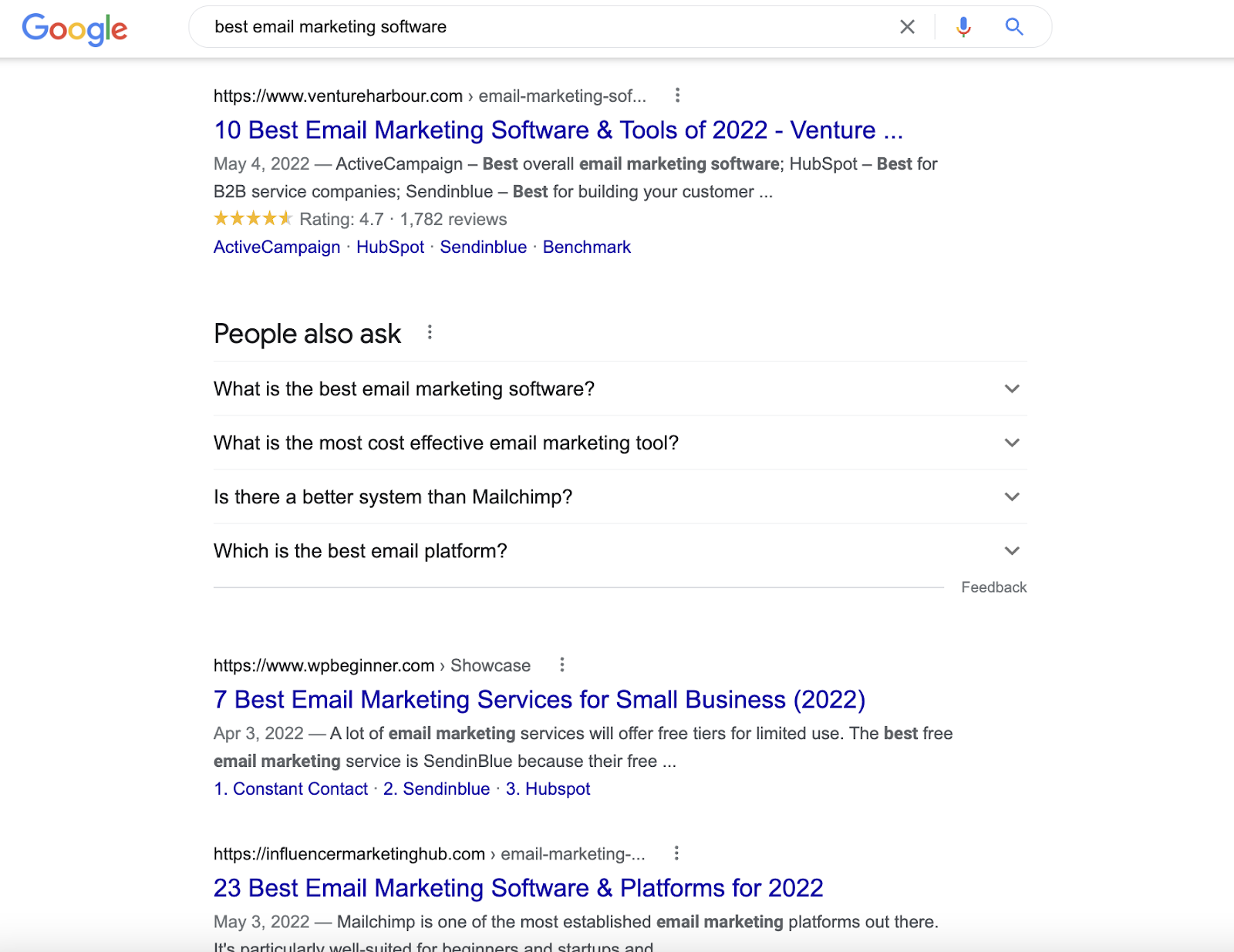
If you can rank for this term, great. But if you can also get mentioned on every single page that ranks, you’re highly likely to be considered for purchase.
Think of it this way. If you’re searching for the best email platform, are you going to trust the email platform website to give you the unbiased information that you need to make a decision? Likely not. Instead, you’ll look for third-party recommendations from other trusted sources.
You can track SERP Visibility in Semrush’s Surround Sound tool.

5 Digital PR Campaign Examples
With those three metrics in mind, let’s walk through actual digital PR campaign examples.
While there are many more, the most popular and effective campaigns in digital PR tend to be the following four:
Trading up the chain Original research Newsjacking Use Newsrooms to amplify your SEO signal Surround Sound SEOI’ll walk through each one and give a real-world example.
1. Trading up the chain
Trading up the chain is a concept brought to life by Ryan Holiday in his book “Trust Me I’m Lying.”
It comes from an understanding of how modern media works and how stories get picked up, which might look something like this:
Trending topic or conversation happens on Twitter Blogger writes about this, breaking the “story” Journalist at mid-tier publication picks up the story, making it seem more credible More and more journalists at more and more prestigious publications pick up the storyEssentially, you start out by seeding your content or story into low tier publications, forums, or low barrier to entry blogs. By generating enough buzz and interest at this level, you can leverage the fact that there is already a conversation occurring to pitch this to a more legitimate publication. You work the story up the chain until the media cycle moves onto its next story de jeur.
As for an example, Ryan Holiday himself walks through a handful in this presentation:
Trading Up The Chain: How To Make National News in 3 Easy Steps (Excerpt from Trust Me, I'm Lying: Confessions of a Media Manipulator) from Ryan HolidayIn the presentation, Ryan talks about how he got media coverage for Tucker Max’s movie, I Hope They Serve Beer in Hell.
First, they vandalized a bunch of the movie’s billboards in LA. Then, Ryan used a fake name to submit images of the billboards to smaller media publications like CurbedLA.
They used these early media mentions to ratchet up the perception that there was controversy and protests around the movie, and then submitted anonymous tips to larger publications.
Eventually, after snowballing to dozens of smaller media mentions, Ryan himself would email larger publications, like Gawker and Mediabistro (large at the time), bluntly asking “how have you not done a story on this yet?”
These publications bit, and soon enough there was a real story and controversy around the movie, which led to tons of free attention and media appearances.
For what it’s worth, the rest of Ryan’s book is written in a somber tone, warning of the ethics of creating inflammatory stories like this out of thin air. There are ways to achieve similar results that don’t involve deception.
If you watch carefully and spend time on Twitter, you’ll see others mimicking this playbook still today.
2. Original Research
Creating original research is one of the strongest ways brands can generate backlinks at scale, as long as the research is interesting and the outreach is executed well.
Content creators want sources to cite and new stories to tell. If you can create an original data bite that can assist the telling of a story, you can get easy passive links.
For example, BuzzSumo has a ton of first-party data on headlines, popular content, and social shares. They often create reports using this data like the following:

You can see here that this piece alone has generated almost 9,000 backlinks.

While not all original research is this successful, even niche reports can make it easier for you to reach out to bloggers and journalists, building the relationship and potentially securing higher value placements than you would have otherwise been able to attain.
We did this at CXL by analyzing how people view search results using eye tracking laboratory equipment.
The findings contradicted previous studies, which was interesting by itself, but also made it easy for me to reach out to all those who had cited previous research on search results viewing behavior and ask them to update their links.
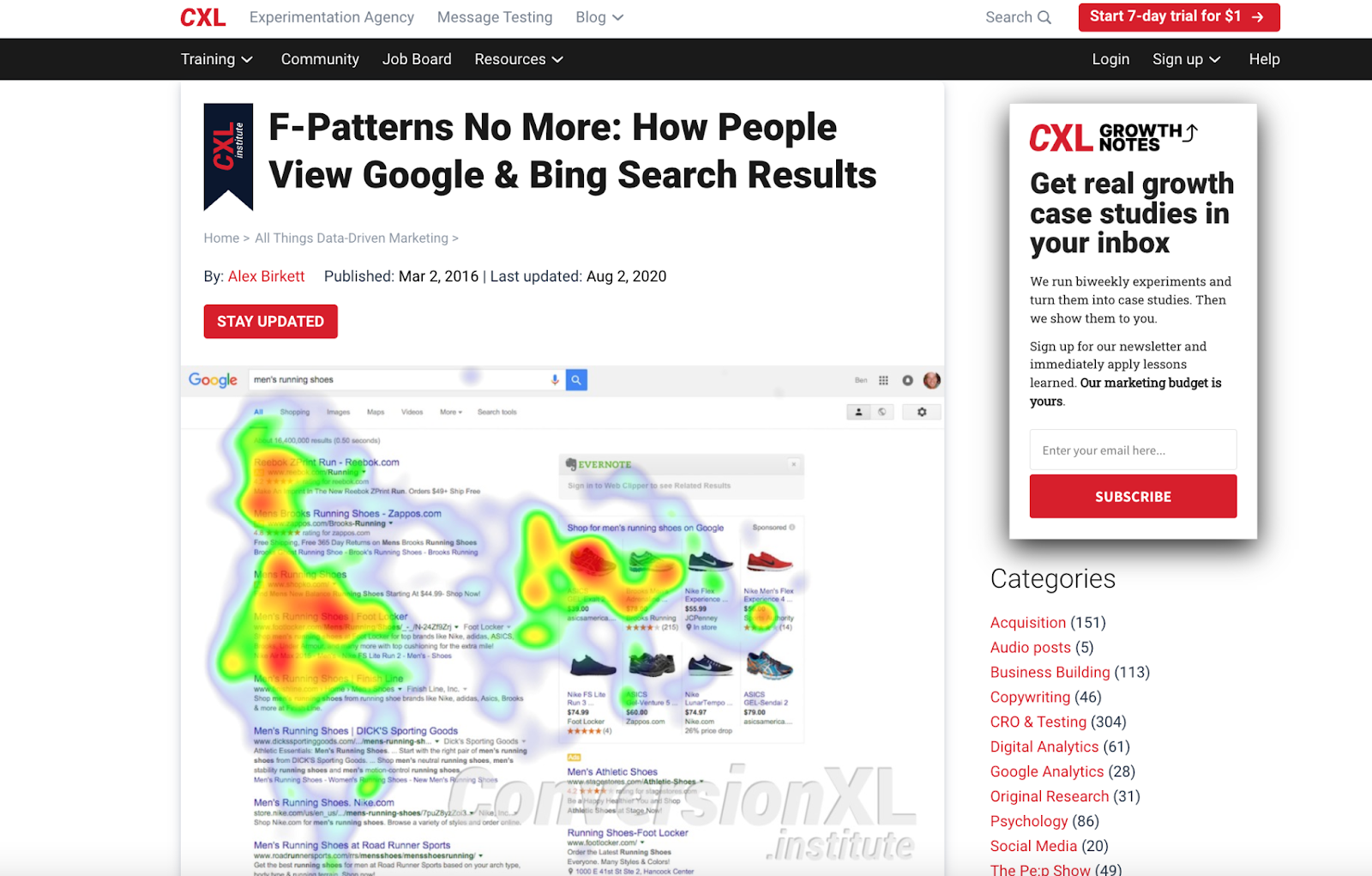
3. Newsjacking
Newsjacking is a term coined by David Meerman Scott in his book of the same title.
Instead of generating a story from scratch and hoping it will catch on, you take a trending topic and try to hijack it and inject your own brand or narrative into the already trending topic.
Nowadays, this is incredibly common, and because of that, much harder to pull off than it used to be. Also, the news cycle turns so quickly now that it’s sometimes hard to justify creating campaigns for topics that may be forgotten about in 24 hours.
But the classic example of newsjacking (now taught in university PR classes) is Oreo newsjacking the super bowl in 2013.
The power went out in the New Orleans Superdome. There was a trending topic on Twitter, and everyone was talking about it. Oreo, in their prescient brand agility, quickly Tweeted this:
Power out? No problem. pic.twitter.com/dnQ7pOgC
— OREO Cookie (@Oreo) February 4, 2013Nowadays, you see a lot of bloggers trying to intertwine their brand narrative into popular culture artifacts like TV series and celebrity news.
You can count on it: any sufficiently large cultural phenomenon will trigger a marketer’s underlying need for siphoning attention from it.
4. Use Newsrooms to amplify your SEO signal
Enhancing your online footprint to take advantage of organic search results is always going to be part of maximizing your visibility. It's Google's world and pleasing the great algorithm in the sky will always be key.
Having an optmized site and an active blog full of truly useful content are obvious must-haves but the problem is that everybody has them. Standing out from the crowd is really tough but you can gain an edge with Prowly, a tool that has quickly become a favorite among forward-thinking PR teams — an online Newsroom.
Online Newsrooms are digital spaces with your brand name in the URL and visually customized to match your brand identity. Think of it as an extension of your main site but dedicated to sharing all your PR communications.
It's a place where you can share anything & everything a journalist might need - from getting-to-know-you histories of a brand to the latest press releases to visual elements like logos, graphics, etc.
Each uploaded element has its own URL and is fully indexable by search engines. With online Newsrooms, each shareable asset that you used to send as an attachment in an email becomes another online breadcrumb that leads back to you or your client.
With online Newsrooms, you can:
Easily direct journalists to a specific announcement or your full library of content with a simple shareable link - no more attachments Greatly expand your online presence by turning anything you want to share into a searchable online asset Show up in more organic searches thanks to this greater visibility Easily update content (something search engines notice and reward) and always share the most up-to-date, current version of everything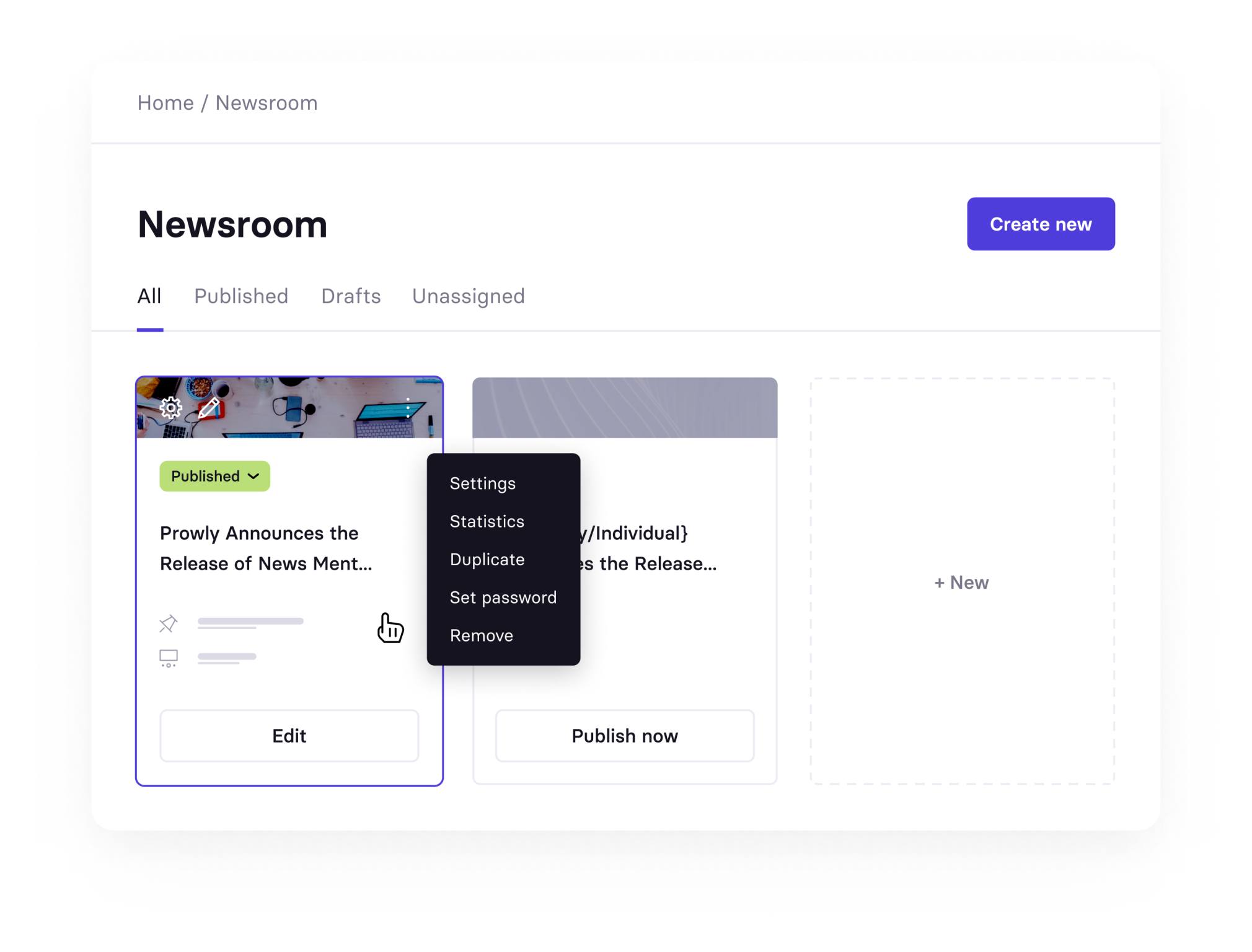 Keep all your news in a journalist-friendly newsroom to control the narrative.
Keep all your news in a journalist-friendly newsroom to control the narrative.5. Surround Sound SEO
Last up, we have my favorite digital PR technique: the Surround Sound SEO strategy.
Before diving into why I love the Surround Sound strategy, a brief description of the strategy is in order.
If you want to find a new book to read, what do you do?
If you’re like me, you ask a bunch of trusted friends what they’ve been reading lately. Or you post on Twitter asking for a recommendation (same thing, but with Twitter friends).
If I ask 10 people what book they recommend, and one of them says, “Founder Brand,” I might check out that book. But if all 10 friends evangelize Dave Gerhardt’s book, then I’m pretty likely to buy it.
This concept is known as “reach and frequency” in advertising.
Reach is how many people see your ad, message, or product.
Frequency is how often they see this message.
Turns out, ad effectiveness improves with increased frequency.
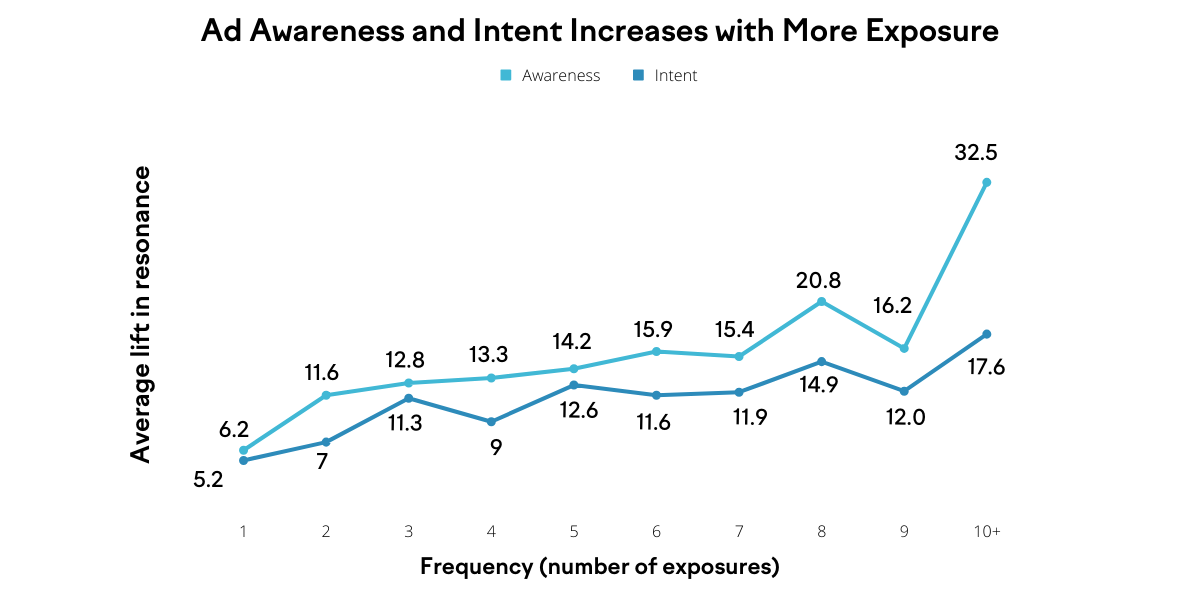
Data Source
The same effect applies to SEO.
In this context, “reach” can be defined by the keyword and its search volume and intent.
Take, for example, the keyword “best content marketing podcasts.” This has a monthly search volume of 70, and the intent is…well, to find podcast recommendations.
Frequency is how many times a given brand (or podcast) appears in the top search results for this query.

Because the search results are basically listicles, my podcast can feasibly be mentioned in all of these results.
If my podcast is mentioned only on one page, though, it’s like only 1 out of 10 friends recommending a book. If my podcast is mentioned on all 10 of the top ranking pages, it’s like everyone in my group recommending the same book.
As for an example of the Surround Sound strategy, we actually did this with our podcast and reached a SERP visibility of 45.6% for “best content marketing podcasts.”
Irina Nica and I worked on a large Surround Sound project a couple of years back. She wrote a better blog post than I could on our process and results, but basically, here was the process:
Define your product-exploration keywords (things like “best [product]”) Determine your current performance for those product-exploration keywords (this and the next two steps is where you use a tool like Semrush’s Surround Sound tool) Understand your brand’s current visibility on the SERPs (this takes into account all of your product-exploration keywords to get a more holistic brand awareness measure). Identify opportunities to improve your SERP visibility
Understand your brand’s current visibility on the SERPs (this takes into account all of your product-exploration keywords to get a more holistic brand awareness measure). Identify opportunities to improve your SERP visibility 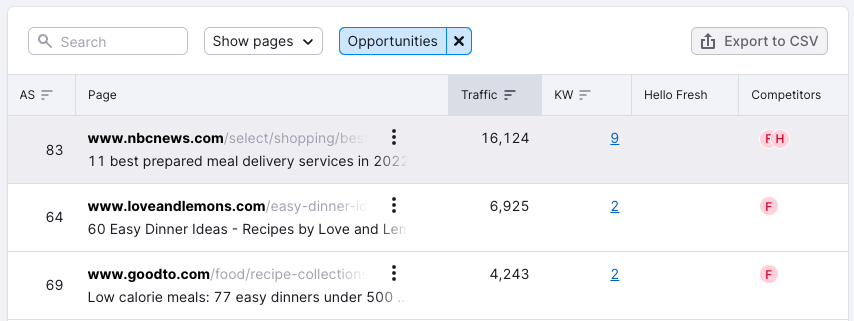 Define a clear goal for your visibility score Start outreach for long-term partnerships
Define a clear goal for your visibility score Start outreach for long-term partnershipsOutreach and relationships are what will make or break your Surround Sound SEO efforts. But if you can pull it off, the Surround Sound strategy is the perfect way to do digital PR:
You’ll get high value backlinks These backlinks contribute to referral traffic SERP Visibility is a proxy for your share of voice in a given niche, as it grows, you’re contributing to brand awareness.Conclusion
Digital PR and traditional PR have the same goals: drive awareness, sculpt the narrative, and capture attention for your brand.
Digital PR does so on the digital landscape exclusively, which means the specific way you track performance is a little different.
The numbers you track to determine Digital PR success have much more in common with SEO and growth, which puts digital PR in the center of multiple functions, including content marketing, SEO, communications, brand, and demand generation.
It’s a cross-functional, multi-disciplinary effort, and one that is incredibly common for digitally native brands.
Innovative SEO services
SEO is a patience game; no secret there. We`ll work with you to develop a Search strategy focused on producing increased traffic rankings in as early as 3-months.
A proven Allinclusive. SEO services for measuring, executing, and optimizing for Search Engine success. We say what we do and do what we say.
Our company as Semrush Agency Partner has designed a search engine optimization service that is both ethical and result-driven. We use the latest tools, strategies, and trends to help you move up in the search engines for the right keywords to get noticed by the right audience.
Today, you can schedule a Discovery call with us about your company needs.
Source:





